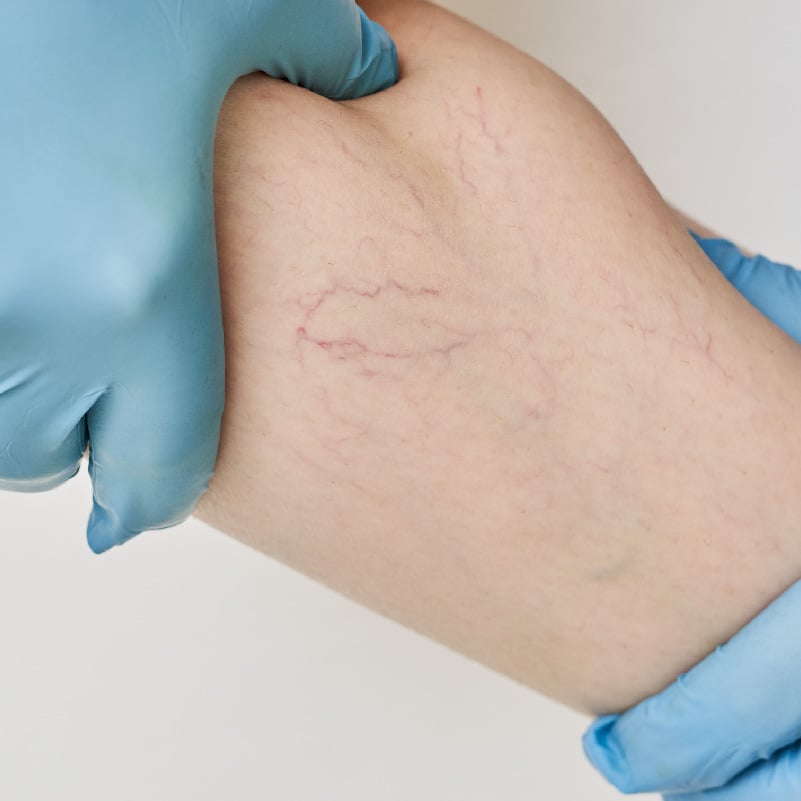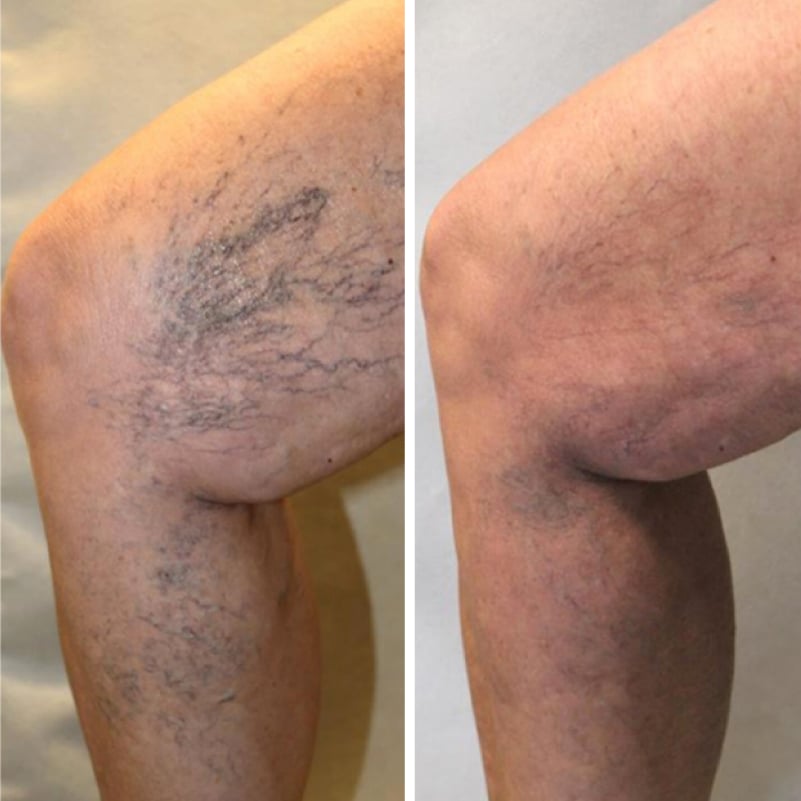Do you often experience unrelenting pain in your legs? Perhaps an achy feeling or restlessness that won't go away? You probably assume, "I've had a long day. I just need a moment to sit down and put my feet up, and then I will feel better." You probably don't think anything is out of the ordinary, but these are all common symptoms of venous insufficiency, or varicose veins.
Unfortunately, as many as 40 percent of people in the U.S. suffer from varicose veins, but many don't even know it! Varicose veins are often ignored or misunderstood, even by healthcare providers.
Fortunately, if you suspect that you are indeed suffering from varicose veins, you have many treatment options available today. If you're not sure if you have varicose veins or not, sign up for a vein screen screening and find out for sure. The most revolutionary of all varicose vein treatment options is the VenaSeal Closure System.
What is VenaSeal?
VenaSeal is an FDA-approved, medical-grade adhesive used to close veins to stop chronic venous insufficiency (CVI) and to cure varicose veins. Unlike industrial super glue, which is tacky, hard, and seemingly impossible to wash away, VenaSeal is soft, flexible, and gentle, and completely harmless to the body. Medical glue has been used in the healthcare industry for decades, so it should be no surprise that physicians have now begun to use it in the VenaSeal Closure System.
What is the VenaSeal Closure System?
The VenaSeal Closure System uses this non-toxic medical glue to seal diseased veins, preventing backward blood flow and stopping varicose veins. Clinical studies have proven this treatment option to be perfectly safe, with high success rates.
- No swelling
- No heat
- No stripping
- No sclerosant agents
- Minimal needle injections
- No anesthesia
- No hospital stay -- procedure is done in comfortable office setting
What to expect during the procedure
First, an ultrasound confirms the location of the varicose veins. Your vein doctor will numb the target area, so you may feel an initial tiny needle prick. Patients usually find themselves to be comfortable throughout the procedure.
Next, VenaSeal is inserted intravenously into the vein via a long hollow tube, or catheter. An ultrasound guides the placement of the tube at the diseased vein. VenaSeal is intermittently placed at varying locations along the vein. Your vein doctor will apply gentle pressure to the skin to press the seal closed and allow the medical glue to dry, which is fairly instantaneous.
Once the medical adhesive comes into contact with blood, it polymerizes and is eventually absorbed by natural body processes.
What happens after a VenaSeal Closure Procedure?
Once the physician extracts the catheter, a small bandage is placed on the entry site. Bruising is uncommon.
For most patients, there is no downtime once the procedure is complete. Your vein doctor can help you decide if you need a rest period. Patients usually return immediately to home, work, or the gym. The diseased vein shows visible improvement very quickly.
Many patients prefer the VenaSeal closure system over traditional treatment options for varicose veins, such as stripping and radiofrequency vein closure. Patients finally have a treatment option that eliminates the need for anesthesia (other than numbing at the target area), includes no risk of damaging nearby nerves, requires only minimal needle injections, and does not require the use of post-procedural compression stockings.
If you aren't sure you have varicose veins, schedule a vein screening at our next available time slot.








